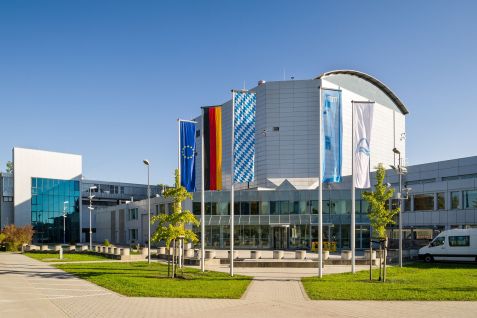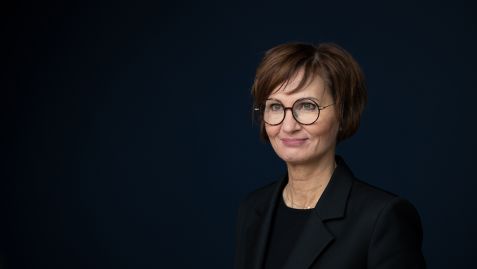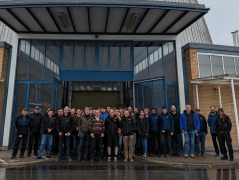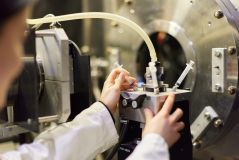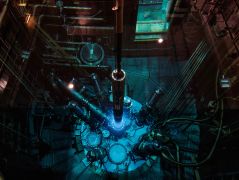MLZ is a cooperation between:
 > Technische Universität München
> Technische Universität München > Helmholtz-Zentrum Hereon
> Helmholtz-Zentrum Hereon
 > Forschungszentrum Jülich
> Forschungszentrum Jülich
MLZ is a member of:
 > LENS
> LENS > ERF-AISBL
> ERF-AISBL
MLZ on social media:

MLZ (eng)
Lichtenbergstr.1
85748 Garching
02.03.2024
Anniversary at the Research Neutron Source Heinz Maier-Leibnitz of the TUM
20 years of neutrons for research, industry and medicine
The Research Neutron Source Heinz Maier-Leibnitz (FRM II) celebrates its 20th birthday on 2 March 2024. Since its commissioning in 2004, the FRM II has played a key role internationally in the supply of neutrons for research, industry and medicine.
The FRM II, operated by the Technical University of Munich (TUM), has been an indispensable resource for researchers worldwide for two decades. Over 10,000 experiments have generated almost 5,000 scientific publications to date, ranging from materials science, energy, quantum technologies, climate & environment, health & nutrition to mobility and archaeology. Since its foundation, the FRM II has guaranteed safe operation and excellent research results.
E-mobility and vaccine candidate
Neutrons penetrate materials non-destructively and provide insight into their interior, for example to develop safer and more durable batteries for e-mobility. Researchers also use neutrons to determine the structure of molecules. For example, scientists recently analysed a promising vaccine candidate against multi-resistant germs.
Cancer drugs: limited medical supplies
Neutrons from Garching also play an important role in the production of radioisotopes for the treatment of liver carcinomas and prostate cancer. The future production of molybdenum-99/technetium-99m for the diagnosis of cancer or cardiovascular diseases can cover a significant part of the European demand (approx. 9 million examinations per year). Only 7 reactors are currently available worldwide for current and future medical supplies.
Gas turbines and mRNA investigated
Industrial customers from a wide range of sectors use the neutrons from Garching, for example to enable the production of more efficient gas turbines or to investigate the introduction of mRNA into the human body.
Federal Minister of Education and Research Bettina Stark-Watzinger emphasised the importance of a reliable supply of neutrons for Germany as a research location: “Neutrons are essential for Germany as a research and industrial location, as many research and innovation projects depend on the supply of high-quality neutrons. The FRM II offers unique potential for German science. We therefore want to play a constructive role in ensuring that neutron research is once again possible in Germany by restarting the research reactor as soon as possible and converting to low-enriched fuels in the medium term.”
History of science “made in Bavaria”
Minister of State Dr Florian Herrmann said: “For 20 years, the FRM II has been writing scientific history “made in Bavaria” as one of the most modern research reactors in the world. The heart of German nuclear technology research beats here! The FRM II offers the widest range of applications of all neutron sources and is of inestimable value for science, industry and medicine. Here in Garching, the FRM II is the most effective neutron source in the world, enabling not only the development of state-of-the-art radiopharmaceutical products for the fight against cancer, but also the production of high-quality semiconductor components and research into countless other scientific and medical fields. Bavaria is already a hotspot for nuclear technology research and will continue along the path of innovation and technological openness. Many thanks to the scientists at the FRM II, who have made the neutron source an indispensable icon for science and research.”
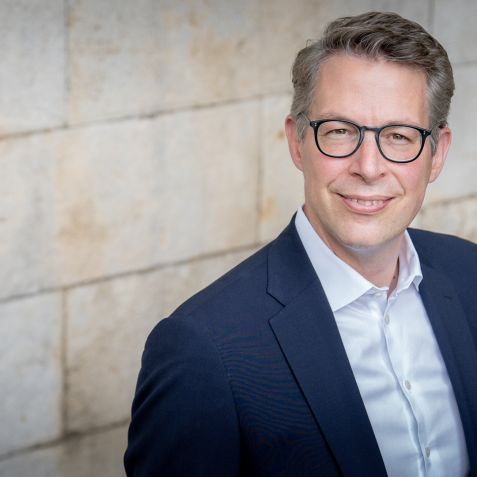
"Research with neutrons provides key findings for existential issues of the future", says Markus Blume, the Science Minister of the State of Bavaria. © Axel König
Milestone in innovative nuclear technology
Science Minister Markus Blume said: “Outstanding research strength and ideology-free technological openness: the FRM II is an outstanding symbol of Bavaria as a world-class science location! Research with neutrons provides key findings for existential issues of the future, from battery and materials research for the energy transition to vital medical research, as in the case of mRNA vaccines. Garching is one of the most important locations worldwide for the production of high-purity doped silicon for the semiconductor industry or power electronics in electric cars, which was previously only possible in reactors – an important factor for our independence from other countries. As an indispensable source of innovative strength, we want to operate the FRM II with the most advanced low-enriched fuel in the future while maintaining the same output as before. In this way, we are setting the next milestone in innovative nuclear technology in Bavaria – for a good and safe future!”
Maintaining expertise for nuclear fusion too
“The FRM II is the most powerful neutron source in the world and as such is a scientific beacon on the map of Bavaria, Germany and Europe,” emphasises Prof. Thomas F. Hofmann, President of TUM. “The unrivalled performance spectrum of the neutron source gives us the unique opportunity to understand phenomena on the atomic scale and thus gain new insights from which the development of future-oriented technological innovations can benefit significantly. And by training young talent at the FRM II, we are making an essential contribution to maintaining Germany’s expertise in the field of nuclear technology.”
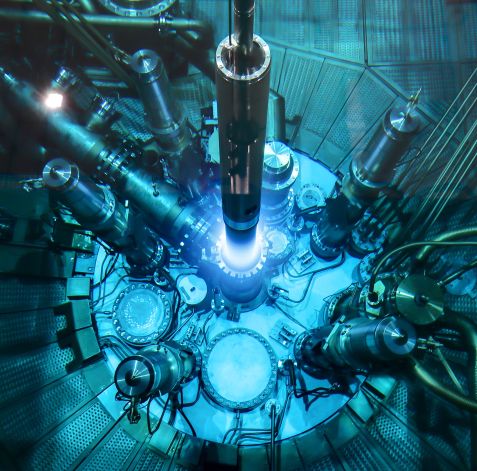
View into the reactor pool of the FRM II. © Bernhard Ludewig
Researchers from the Max Planck Institute for Plasma Physics are using neutrons and positrons at the FRM II to search for heat-resistant materials for the walls of a future fusion reactor. Research into new materials is a particular focus of the FRM II, ranging from applications such as solar cells, electronic components and properties for quantum computers to the optimisation of machining processes in mechanical engineering – a key German discipline.
In 2013, TUM, Forschungszentrum Jülich and the Helmholtz-Zentrum Hereon founded the Heinz Maier-Leibnitz Zentrum (MLZ) for the scientific use of the research neutron source with the collaboration of the Max Planck Society and nine other universities. It is jointly funded by the Federal Ministry of Education and Research, the Bavarian State Ministry of Science and the Arts and other cooperation partners. With around 30 different scientific instruments, the MLZ covers a broad spectrum of research fields.
The research neutron source is currently undergoing an extended maintenance break because the so-called central channel has to be newly manufactured and replaced. As soon as this has been completed, the FRM II will once again supply neutrons for researchers, industrial customers and medical applications.
Press contact:
Anke Görg & Andrea Voit
Email: presse@frm2.tum.de
Phone: +49 89 / 289-14615 / -12141
Follow our story on social media:
Related News
MLZ is a cooperation between:
 > Technische Universität München
> Technische Universität München > Helmholtz-Zentrum Hereon
> Helmholtz-Zentrum Hereon
 > Forschungszentrum Jülich
> Forschungszentrum Jülich
MLZ is a member of:
 > LENS
> LENS > ERF-AISBL
> ERF-AISBL
MLZ on social media:




